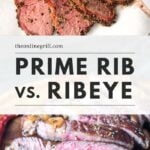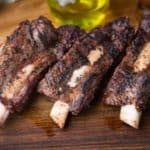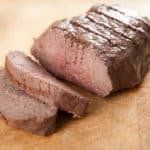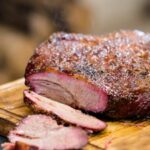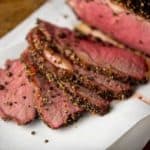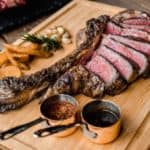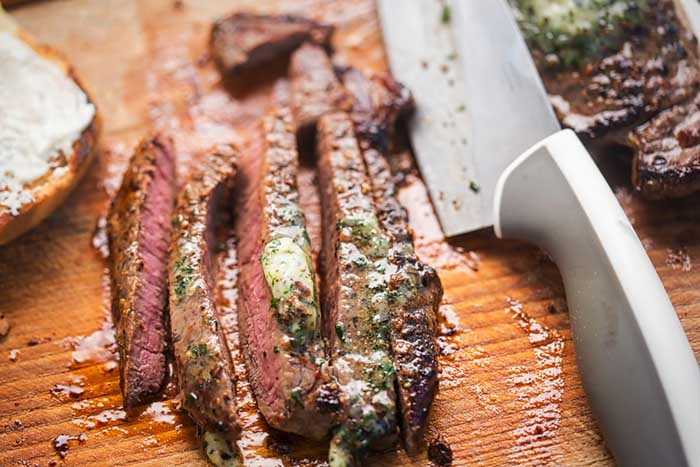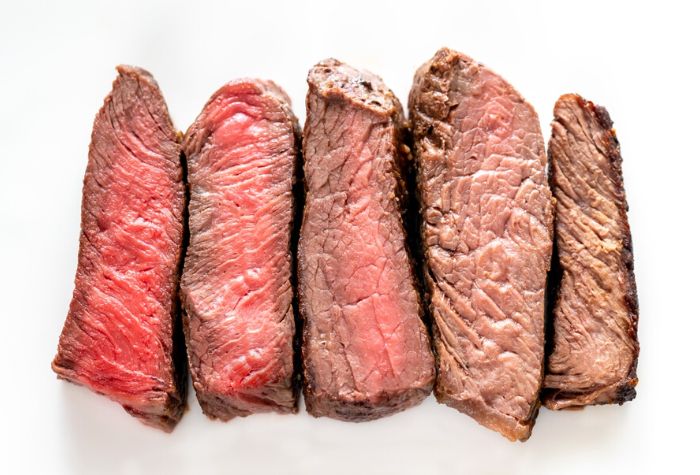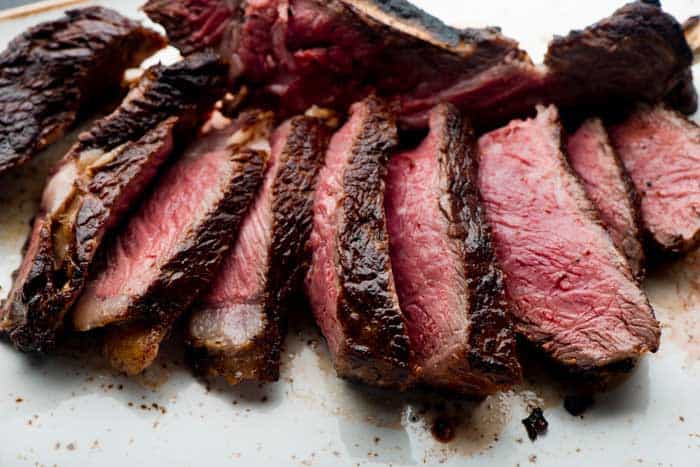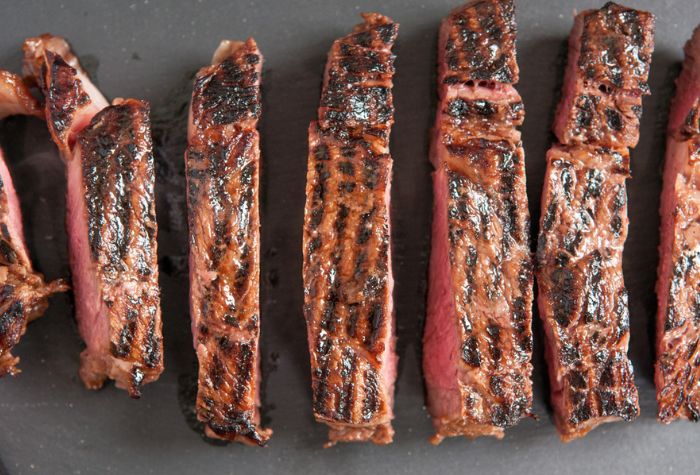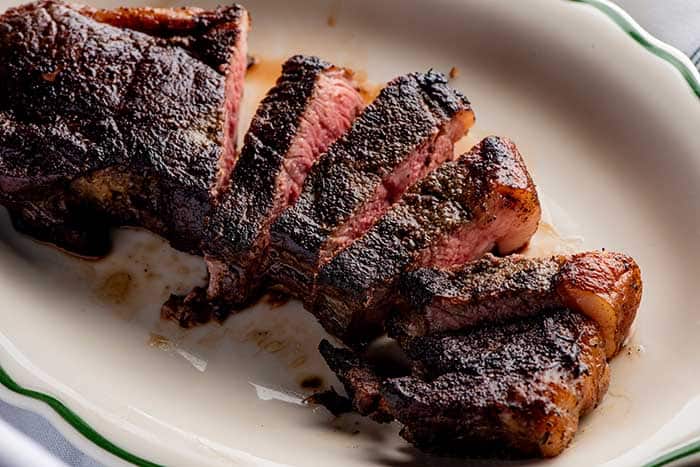Confused by beef cuts? They might be from the same primal cut, but there’s more that separates prime rib and ribeye than you might think. Discover which cut melts in your mouth, rocks the grill, and fits your budget.
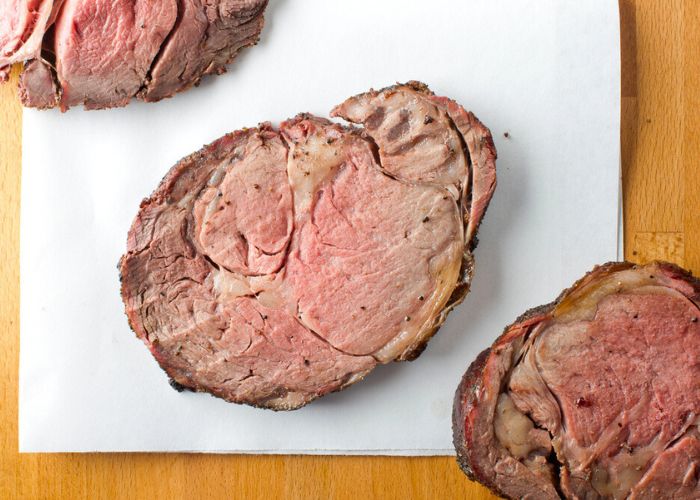
Prime rib and ribeye are both iconic beef cuts known for their rich flavor and tender texture. Don’t let their similar names fool you—there’s plenty that separates these two beef cuts, and they need very different preparation and cooking methods to get the best out of them. Here’s everything you need to know.
Quick Answer
While both originate from the same primal rib section of the cow, the key differences lie in the cut and cooking method, with prime rib being a larger, bone-in roast and ribeye a smaller, boneless steak.
Prime rib, also known as a standing rib roast, is a larger cut that includes the ribeye. Being larger, it often comes with the bone-in, along with more fat and connective tissue, which all work together to provide a much richer flavor. It’s typically served as a centerpiece for special occasions.
Ribeye is a smaller, boneless cut, more suitable for individual servings, known for its marbling and succulence when grilled or pan-seared. Because of this, it’s easier to cook and usually less expensive than prime rib.
The Main Differences
Origin
Both prime rib and ribeye come from the same beef primal cut: the rib. This entire section sits between the beef chuck at the front and the beef loin at the back, and comprises seven bones from bones six through twelve. This section has a high amount of natural marbling, which is a key to the amount of flavor and juiciness of a cut.
Prime rib is the roasting joint taken from this cut. It can be sold bone-in, either with three or four bones still left in, or as a boneless joint.
You might see prime rib sold as ‘standing rib roast’. This is a different name for essentially the same thing, but comes from the fact that when it’s cooked bone-in, the bones sit vertically above the main section of the roast.
Ribeye is taken from part of the prime rib, and is from the upper part of the rib primal closer to the shoulder. This area of meat comprises softer, less-worked muscles that are held together with tender sinew and large swaths of rich fat between them. Ultimately this gives you a ribeye that’s outrageously soft and tender.
Size
So with both prime rib and ribeye coming from the same section of the steer, what really sets them apart? The answer is their size.
Being a subcut of rib roast, ribeye is naturally smaller. Because of this, butchers often sell it as smaller steak sections from between the rib, either bone-in or boneless (more on this later). This small size helps make ribeye steaks perfect for high-heat grilling and searing.
Prime rib, however, is usually sold as a larger roast joint, typically weighing anywhere from 4 to 10 pounds. This larger size makes it perfect for low and slow cooking methods, like smoking, to achieve the ideal melt-in-your-mouth texture.
Flavor Profile and Experience
All of which brings us to the most important distinction between prime rib and ribeye: the flavor. And with there being key differences in their fat composition, whether they’re bone-in or bone-out, and their cooking methods, there is a stark difference between the two.
Prime rib’s slow cooking methods draw out deeper buttery-beefy notes from the fat and bone present in the roast.
Ribeye, on the other hand, benefits from intense browning from the Maillard Reaction provides by high-heat grilling. This gives it a beautiful char and intense caramelization that you only get with beautifully seared steak. What makes it stand out from other similar beef steak cuts, however, is that it has more marbling, which provides a more complex flavor.
Prime Rib Explained
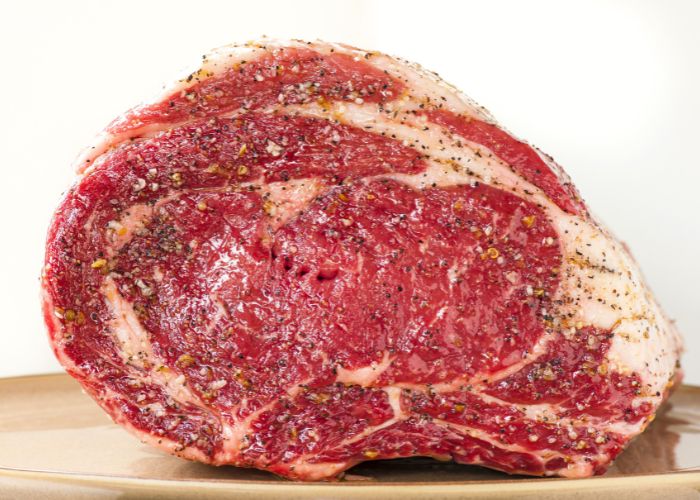
Beef prime rib, also known as standing rib roast, comes from the forequarter of the steer, specifically ribs 6 to 12. This hefty cut can weigh way over 10 pounds, boasting 7 ribs and plenty of marbled, tender muscle. While it can be butchered into smaller portions, prime rib is best enjoyed as a whole roast, showcasing its impressive size and flavor potential.
The name “prime” doesn’t necessarily denote the meat’s grade, but rather refers to the cut itself. While Prime grade is considered the top tier, most butcher shops and even big box stores typically offer Choice grade, still delivering fantastic results. Even Select grade technically qualifies as prime rib, and most recipes treat them all similarly.
Prime rib’s reputation as the perfect beef joint for slow cooking is more than justified. A thick layer of fat marbling throughout the muscle ensures both moisture and intense beefy flavor. When cooked just right, this marbling renders beautifully, infusing the meat with its essence and creating a buttery, melt-in-your-mouth texture. This marbling explains the raw cut’s distinctive appearance – swirls of fat interspersed with one or two thicker white streaks, which are also connective tissues.
Quick Facts
- Large cut of beef from the primal rib section
- Often available bone-in (standing rib roast) but can be found boneless
- Known for its rich flavor and marbling
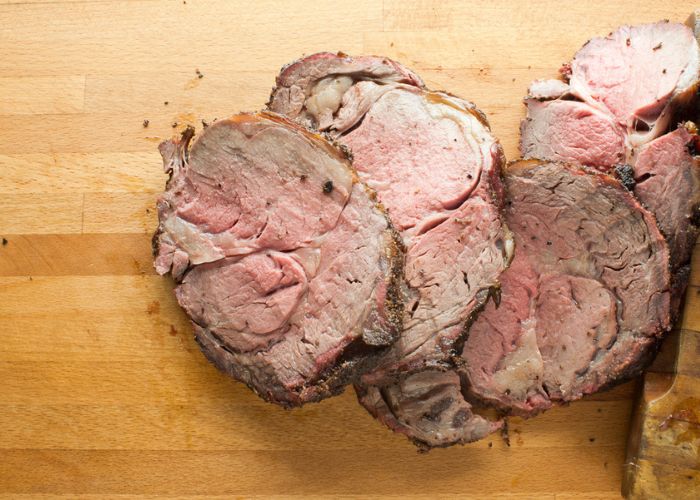
The Best Way to Cook Prime Rib
Being a roast joint, the best way to enjoy prime rib is slow smoked or roasted over low temperature to help it achieve ultimate tenderness. Our classic smoked prime rib recipe can be broken down into these three steps:
- Smoke at 225-250°F (107-121°C) to an internal temperature of 130°F (54°C) for medium-rare
- Pull from smoker and tent in foil. Allow to rest for 10-15 minutes.
- Carve by removing bones first, then slice against the grain to serve
Ribeye Explained
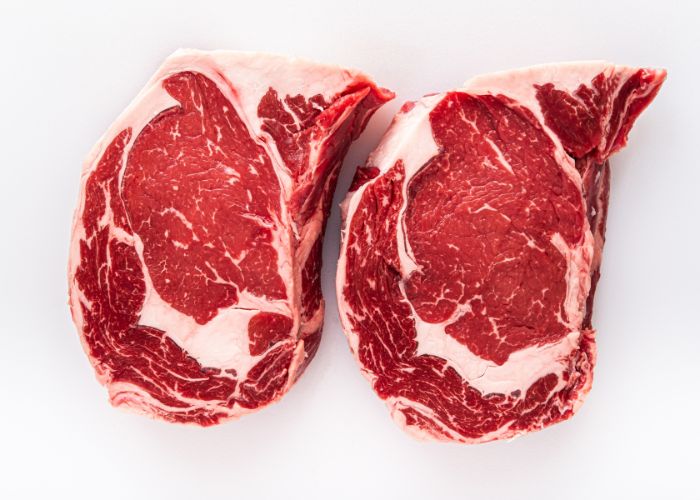
Ribeye steak stands as a crown jewel of the butcher’s case, a juicy, flavorful cut that promises a symphony of beefy satisfaction. Hailing from the cow’s rib section (specifically ribs 6 through 12), it shares a neighborhood with the more bone-intensive prime rib roast, yet boasts a distinct identity.
Unlike its hefty cousin, ribeye typically presents as a smaller boneless steak (although some people swear by bone-in versions), perfectly sized for individual indulgence. But don’t let its more manageable stature fool you—this cut packs a powerful punch of flavor.
Ribeye isn’t shy about its marbling, and for good reason. These delicate ribbons of fat weave throughout the muscle, ensuring both a buttery texture and that signature, rich, beefy taste. While not quite as intense as prime rib’s deep flavor, ribeye holds its own with a satisfying depth that lingers on the palate.
Ribeye isn’t just one delicious muscle, it’s a trifecta! The central ‘eye’ (longissimus dorsi) delivers classic beefy flavor, while the marbled outer strip (spinalis dorsi) adds buttery richness. Don’t underestimate the smaller complexus at the end, it rounds out the symphony with a touch of complexity.
The precise proportions of these muscles vary depending on where the steak is cut within the rib section. For the ultimate flavor bomb, seek out cuts with a generous portion of spinalis dorsi—they’ll deliver the biggest bang for your buck.
Quick Facts
- Cut from the rib primal, same as prime rib, but smaller and (usually but not always) boneless
- Available as smaller steak-like portions
- Similar marbling and flavor to prime rib, but less bone and fat
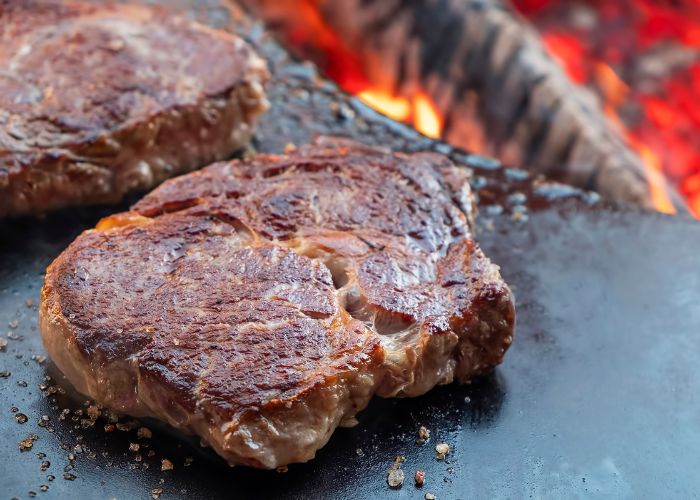
The Best Way to Cook Ribeye Steak
Ribeye thrives on quick, high-heat cooking methods. A few minutes on the grill or a searing hot pan is all it takes to achieve a caramelized crust and a juicy, tender interior. Talk about instant gratification.
For the best results, we like to reverse sear ribeye steak. This initial low-temperature smoke gets the marbling going before giving it a quick high heat sear to give it that caramelized crust and charred finish.
- Dry brine the steaks with a generous amount of kosher salt. Put back in the refrigerator for about 2 hours.
- Fire up your smoker to 250°F (121°C). While it warms up, take your steaks out the fridge and allow them to start to come to room temperature.
- Once the smoker reaches the target temperature, place the steaks on the smoker grates and smoke to an internal temperature of 110°F (43°C)
- Fire up your grill or skillet over high heat, and then sear your steaks for 2-3 minutes per side to a medium-rare temperature of 130-135°F (54-57°C)
- Remove the steaks and allow to rest for 5-10 minutes before serving
